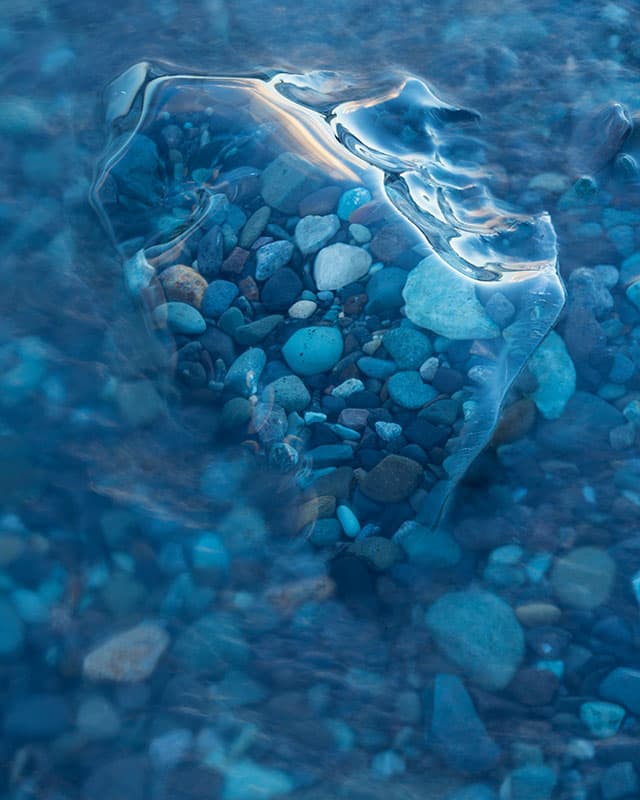Photo Insight with David Ward
 David Ward is one of the UK’s finest landscape photographers. With more than 20 years’ experience in large-format photography, he has photographed extensively throughout the UK and in countries such as Canada, Iceland, Norway and France. He has also led workshops for Light & Land. David has written two books on his photographic philosophy called Landscape Within and Landscape Beyond. Each month, he will discuss the story behind one of his fantastic landscape photographs
David Ward is one of the UK’s finest landscape photographers. With more than 20 years’ experience in large-format photography, he has photographed extensively throughout the UK and in countries such as Canada, Iceland, Norway and France. He has also led workshops for Light & Land. David has written two books on his photographic philosophy called Landscape Within and Landscape Beyond. Each month, he will discuss the story behind one of his fantastic landscape photographs
This image was taken on the shores of Jökulsárlón in Iceland, which is a glacial lagoon. I went there at dawn and noticed that this fantastically clear piece of ice on the foreshore was enlarging the pebbles underneath it and reflecting some of the colour from the sky. I liked the solidity of the ice as opposed to the motion blur of the water that was rippling around it, so I wanted to make that contrast. I decided to make it a bit ambiguous – in fact, a few people who have seen this image thought that I’d frozen a wave.
I started by photographing a number of different pieces of ice together in a group and I saw this one piece that was magnifying the pebbles with the light catching the top. On the left there’s a kind of stripe of reflected cloud as well – and, if you look carefully, there are three or four reflections of me and my tripod on the top edge! I was using a tilt-and-shift lens on a Canon EOS-1D X, and I used tilt to make sure that the ice was sharp all the way through from the front edge to the back. The pebbles also looked in focus when the camera was focusing on the surface of the ice. There is so much beauty in the texture of the water, the smoothness of the ice and the colour that’s being softly reflected, but there is also a contrast of that beauty with the ambiguity. I find that to be a satisfying thing to do.
I tried to compose the image as straightforwardly as possible. I just put the subject in the centre of the frame, giving the right amount of room for the moving water. I experimented a little with shutter speeds to see what was optimal for getting motion blur in the water. I couldn’t set it too slow because the waves were actually moving a piece of the ice around. Sometimes, if a big wave came, the whole thing moved, so I had to experiment to control that factor as well. It was a very windy day, with wind speeds of around 70mph, so even in the lee where I took this photograph the water changed in height and ferocity quite a lot. I probably made about ten frames in total.

I have visited Jökulsárlón a few times – it’s a very spectacular place. A lot of people photograph the wide view of the mountains in the background and the glacier, but I wanted to do something different. I did make some wide views while I was there, but they weren’t the ones I was interested in when I came back. As soon as I found this image, I thought: ‘That’s the one that’s going to be the keeper’. Many people may think that what I did was almost perverse – turning my back on such a view. On the other hand, if I had kept the images of that view there would almost certainly have been somebody else who had been there in better light, or had seen better icebergs, so I thought it was more interesting to try to show something that I haven’t seen anybody produce before.
I like to make pictures of what I call anonymous places. Although I’ve explained that this shot was taken in Iceland, it actually doesn’t matter where it is – it could be in Greenland, Norway or anywhere. This photograph was about trying to confound people’s expectations about water as much as anything else, so where it was taken really isn’t important.
I think people tend to rush too much through a space when they’re looking for a ‘killer shot’. They’re not actually stopping just to look. When you stand somewhere for a long time, especially in landscape photography, you notice things. So what I try to do is stand still and look at things around me, because there’s almost always something interesting. If you just stop and stare a bit harder, I think you’ll be more open to different possibilities.
I like to make images that force people to look at them twice. I think the hardest and most interesting thing to do in photography is to try to make an image that isn’t just a straightforward translation of light reflecting off the thing in front of you, but that actually makes people think about what’s going on. These are the images that have a longer life.
David Ward was talking to Jon Stapley
To see more of David’s images or to book a place on one of his workshops, visit www.into-the-light.com







